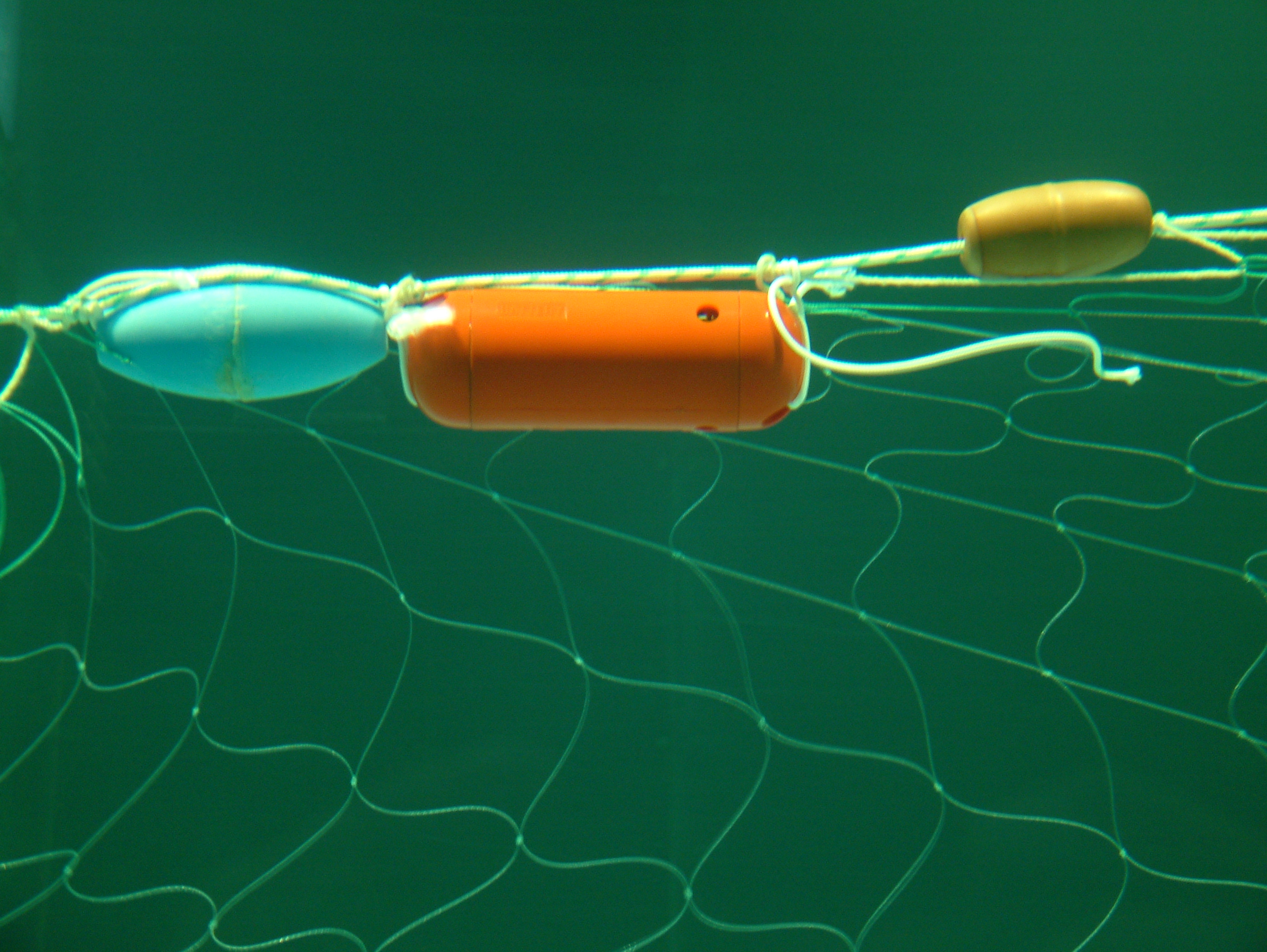Drift Nets
Summary
This is a type of gill net that is suspended in the water, usually just below the surface, but can be worked anywhere from the seabed to the surface to target pelagic species.


Environmental impact
As with gill nets much of both size and species selectivity can accurately determined by setting the mesh size of the gear to suit the size of the target species. The other criteria that makes this gear very good at species selection is the skippers knowledge to know where and when to set his gear to just catch the target species.
To have the this knowledge and experience is a major part of this work. In some areas there can be problems with cetacean by catch but in most UK fisheries the skippers are already aware of this and if necessary, have adopted the use of acoustic pingers to deter the cetaceans from approaching the gear. In many fisheries today the use of pingers is mandatory.
By-catch of large pelagic species can be a more a problem for the ocean going drift net fisheries. Further information on this can be found on the FAO website.
There is not usually any seabed contact with this gear. Even in the few areas where drift nets that are set close to the seabed they are so light and fragile that they should not impact the seabed at all.
Other information
The depth below the surface can be set by rigging the floats on the rope strops attached to the headline. As with other gill nets the mesh size is chosen to suit the size of the target species. The main difference with this type of gill net is that it is not anchored, but allowed to drift with the tide, usually with one end attached to the boat. The soak time will also be much shorter than that for bottom set gill nets.
The use of drift nets to target pelagic fish is fairly widespread throughout the world. generally in the UK, drift nets are used on a small scale by inshore vessels, often on a seasonal basis,in various areas to target small pelagic fish including bass. In some areas, drift nets are set to drift very close to the seabed to target demersal species.
Drift netting is also used in many overseas fisheries to target tuna, swordfish, and a few other large pelagic fish. There are concerns with some of these fisheries due to their accidental by-catch of other fish species, sharks and cetaceans. Length of individual nets can vary from 50 metres to 200 metres, and the size of fleets from 300 metres to 5,000 metres.
The length of nets being fished at any one time will depend on the size of the vessels and the target species and for most gill nets the soak times, the time that a fleet is left fishing for, can range from a six hour tidal soak up to 72 hours for most. Usually drift nets are left to soak for only a few hours, often just over the couple of hours of slack water as the tide turns or for a full tidal soak od six hours.
These figures are dependent on which species are being targeted and whether there is any possibility of conflict with other boats using mobile fishing gear in the area. The nets are rigged with floats or float line at the top of the netting and a weighted rope at the bottom to hang the netting vertically in the water like a curtain. In this gear there is more flotation on the top of the gear to ensure it actually floats, whereas demersal gill nets are weighted to sit on the seabed. In some rigs the flotation will be set a certain distance above the actual net, on short rope strops to enable the net to be suspended at the depth where the fishermen think the fish will be swimming at.
Shooting starts with dropping the dhan overboard and the vessel steams away from it, paying out a short rope and then the fleet of nets until the full length of netting has run out and the second dhan follows or this end is left attached to the vessel. Retrieval of the gear is carried out in the reverse order.
The catch is normally removed from the nets as the gear is hauled onboard. It will then be set aside for onboard processing that usually consists of gutting and washing. It will then be passed into the chilled fish room where it will selected by species and stowed in iced boxes. On smaller vessels the catch may be retained on deck and stowed in specially designed insulated boxes or tubs. The fish will be laid on a bed of crushed or slush ice (ice mixed with water) to chill the fish quickly and retain quality.
Virtually all gill net boats now use net haulers to help them retrieve the gear. The basic design consists of a rotating drum covered with rubber, which is driven by a hydraulic system run off the main engine. The rubber grips, the head rope and foot rope (frame ropes) of the net allows the hauler to take the strain of the net and haul it on board the boat. Variations on this basic design include rubber belts or spheres which exert a downward pressure on the top of the net as it passes over the hauler. This gives the hauler a better grip of the ropes and netting making it easier to haul the gear.
Gear classification
Main target species (UK)
-
- Bass
- Herring
- Mackerel
- Salmon
- Sea Trout
Possible bycatch
-
- Occasional cetaceans and mammals
- Sharks